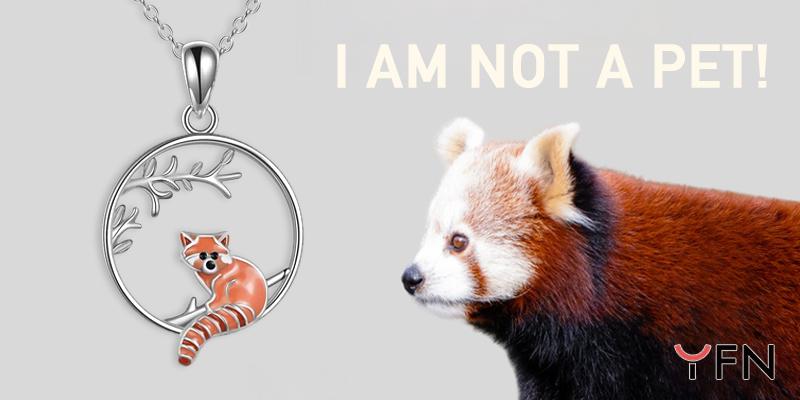The Red Panda is an adorable, endangered species that is native to the Eastern Himalayas and southwestern China. These small mammals are beloved by many, but do you know they are struggling to survive in the wild? Stay tuned and learn more about these little cute guys.
Are Red Pandas Real Pandas?
It is a common question since red pandas and giant pandas share the same name. But according to the latest genetic research, red pandas belong to Ailuridae while giant pandas were placed in the bear family, Ursidae.
They also belong to none of raccoons and bears though they may share common physical features such as skulls, ringed tails, and teeth or common DNA parts.
Are There Two Species of Red Pandas?

Yes, there are two species of red pandas classified on both physical features and geographical location.
Ailurus (fulgens) styani and Ailurus (fulgens) fulgens are two species of red pandas, which are members of the Ailuridae family. Ailurus (fulgens) styani are commonly found in southwestern China and are also named Chinese red pandas. They are featured in their redder face and ringed tails differing from Ailuru (fulgens) fulgens, AKA, Himalayan red pandas with white faces living in Nepal, India, and Bhutan.
Are Red Pandas Carnivores?
These little guys can’t be called carnivores strictly. They are omnivores which means that they eat both plants and animals. They primarily eat bamboo, but they also eat fruits, nuts, eggs, birds, and insects.
Why Do Red Pandas Put Their Hands Up?

When provoked or threatened, red pandas will stand on their hind legs to pretend they are giant guys to scare off the deterrents. Sooooo adorable, aren’t they? When I saw this picture my heart literally melted. Besides, they will also stand up when the Red Panda is trying to get a better view of its surroundings.
Are Red Pandas Aggressive?
Red Pandas are not aggressive animals. They are shy and solitary, preferring to keep to themselves. They will only become aggressive if they feel threatened or if they are trying to protect their territory as we mentioned above.
Are Red Pandas Going Extinct?

Yes, they are going extinct. Due to habitat destruction and poaching, their population has dropped by more than 40%, and estimates in the wild are as low as just 2500 animals in the past 50 years.
Red pandas have been downgraded from “vulnerable” to “endangered” status on the International Union for the Conservation of Nature’s Red List of Threatened Species.
According to these statistics of The Red Panda Network, poaching cases mainly happened in Kathmandu, the capital of Nepal. The price range of a red panda hide can range from NPR 25,000 to NPR 100,000, which is equivalent to approximately 230 USD to 920 USD.
If poachers are apprehended, they may be subject to a prison sentence of one to ten years, a fine of between 10,000 and 75,000 Nepalese Rupees (92 to 690 US Dollars), or both.
What Can We Do to Protect Them from Extinction?
Red Pandas are amazing animals, but without our help, they will only remain in pictures and in gifs on this website, instead of roaming and napping in the trees and being derpy with pumpkins or playing in the snow like they should be doing.
If you are in a position to be able to help them in even a small way, we’d like to ask you to do so.
As an Individual, What Can We Do?
1. Improve Endangered Species Conservation Awareness
As we all know, the power of an individual is tiny while the masses are mighty. Therefore, it is important to let more people know the tough situation red pandas are facing now by wearing a T-shirt or red panda bracelet, or any stuff with red pandas images.
Cooperating with The Red Panda Network, we have supported their hard work by donating five percent of the sales related to red panda jewels.
2. Reduce Carbon Footprint
- Walk, bike, or take public transportation whenever possible.
- Unplug electronics when not in use.
- Invest in renewable energy sources such as solar, wind, and geothermal.
- Adopt a plant-based diet to reduce your carbon emissions from the production, transportation, and consumption of meat and dairy.
- Reduce paper waste by using reusable shopping bags and printing double-sided.
3. Donation Directly to The Red Panda Network
Charities like The Red Panda Network and WWF do fantastic work with local communities to help our favorite animals – and any donations you make are tax deductible (in the US) too. As well as direct donations, they also run eco-trips, awareness days and specific projects such as the first protected Red Panda forest area.
4. Visit Local Zoos
You can also help by visiting your local zoo or wildlife park, which often will work with the above charities to give them expertise, donations, and equipment as well.
What Should the Local Governments Do?
1. Financial Support to Wildlife Conservation Organization
Most non-profit conservation organizations raise funds mainly from public donations. They are also struggling to survive due to the shortage of funds. Only when governments take these environmentally friendly organizations seriously, can the local economic development and ecological environment become sustainable.
2. Build More Strict Laws and Regulations Related to Anti-Poaching
Stricter rules and regulations related to anti-poaching can undoubtedly decrease the number of cases of poaching. Strengthening the enforcement would also help.
Related articles:







